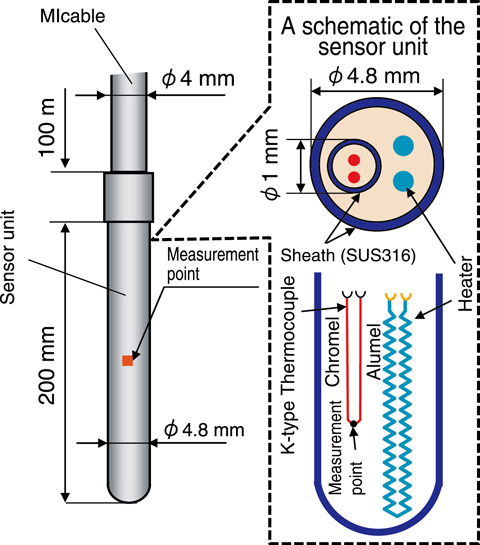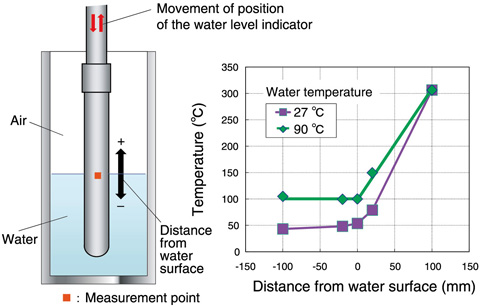
Fig.1-50 Schematic diagram of the water level indicator

Fig.1-51 Results of water-level measurements using the developed water-level indicator
The water level in a light water reactor is monitored using water-level indicators, such as float-electromagnetic-induction-and electrode-type indicators. During the accident at the TEPCO’s Fukushima Daiichi NPS, measurement of the water level in the spent fuel pools and in the pressure vessels was not available owing to the station blackout, which caused a delay in information gathering. Thus, it is necessary to develop a new, reliable water-level indicator that is available under station blackout conditions.
The target indicator is small, portable, has high radiation resistance, and operates on a battery-level power supply. To achieve downsizing and high radiation resistance, a method for measuring the water level using an installed heater and thermocouple was adopted.
A heater wire and a K-type thermocouple are installed in a stainless sheath. This structure enables achieving a small diameter. An MI cable is used as the lead wire and can be used in a high-radiation environment.
The water level is measured using the indicator, which measures the temperature difference in the water or in the air caused by the different heat transfer coefficients of the water and air. To measure the water level with high accuracy, the temperature difference is increased by the heater in the indicator using a suitable impressed voltage (Fig.1-50).
A characterization test was performed. The impressed voltage was changed from 1 to 5 V, and the temperature change was measured in the water and in the air by moving the detector in the vertical direction. From the test, it was confirmed that the water level can be detected using these small voltages. Fig.1-51 shows the results of water-level measurements performed with water at 27 °C and 90 °C. A voltage value of 5 V was impressed to the heater. The developed water-level indicator showed a large temperature difference in water and air, and the accuracy of the measurement of the water level was approximately 20 mm. If the water-level indicator is used in an actual reactor facility, the measuring person and the apparatus should be kept away from the sensor unit in order to avoid severe conditions. Therefore, a water-level indicator with a 100 m MI cable was also manufactured, and a demonstration test was performed.
The results of this test indicated that the developed water-level sensor is sufficiently enough to be portable and that it is possible to measure the water level using a small battery power supply.
Importantly, the developed sensor unit functions in high-temperature and high-radiation severe environments, where no one can access the measurement apparatus, because the sheath-type thermocouple and heater have high radiation resistance.
<Previous: 1-23 | Next: 2 Research and Development of Advanced Nuclear System >